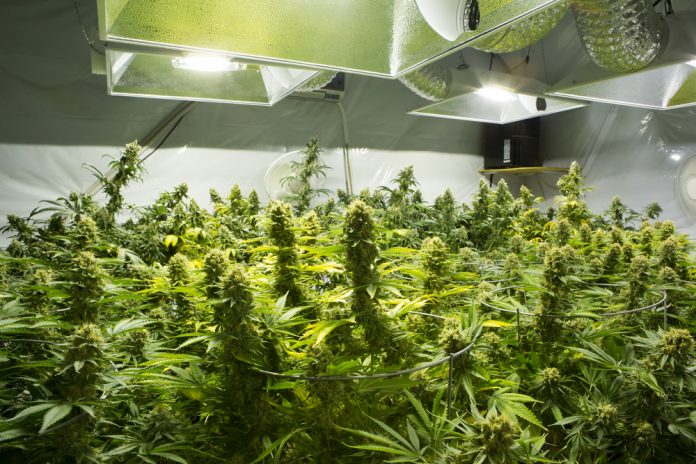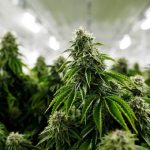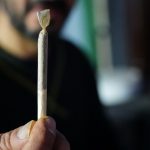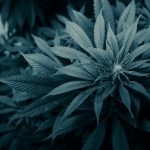U.S, March 12, 2020 (CANABISTECH) This webcast explains the impact of lighting on all other environmental factors, so that you can grow smarter and bring the highest quality plants to your customers. Adjusting-your-enviroment.how-lighting-affects-cannabis-cultivation
In the cannabis industry, more biomass means more profit. If there are simple alterations to cultivation strategies that optimize biomass, this information is necessary to share across the cannabis space.
THERE’S MORE THAN PHOTOSYNTHETIC ACTIVE RADIATION TO MAXIMIZING CANNABIS BIOMASS
While lighting recipes are influential in plant development, Fluence found other factors to be more critically involved in specifically increasing biomass. To illuminate how to master lighting, Sean Sangster, a project manager for horticultural services at Fluence by OSRAM, spoke with Ellis Smith on a webcast hosted by Cannabis Tech on Feb. 18th, 2020.
This webcast covered the key terms photosynthetic active radiation (PAR), photosynthetic photon flux density (PPFD), and daily light integral (DLI). Additionally, Sangster discussed a case study by Fluence, how to manage lighting throughout the day, and adjusting the environment to work with the lighting strategy used by a grow.
“PAR is the wavelengths of light that are used to drive photosynthesis,” Sanger explained. “These wavelengths usually ran from 400 to 700 nanometers on the electromagnetic scale.”
While this factor is crucial to plant morphology, PAR has been a star in the lighting world for years. Cultivators trusted PAR recipes in their search for the most lucrative harvest. However, by funding and performing research, Fluence has found that it is PPFD and DLI that most impact cannabis’s biomass.
HOW DOES PHOTOSYNTHETIC PHOTON FLUX DENSITY RELATE TO CANNABIS BIOMASS?
The two main functions of lighting in cannabis production are growth and development. “There are three parameters or properties of light that dictate that, which are light quantity, light quality, and light duration,” Sanger stated with an accompanying infographic.
“In other words, intensity, spectrum, and photoperiod. The interactions between these three properties elicit both growth and plant development responses, such as plant biomass accumulation, morphology, as well as flowering. But, the main thing we need to focus on today, and what I really want growers to take home from this presentation is light quantity, or intensity, which equates to plant biomass. In other words, PPFD, or light intensity. And so why is this important? Well, there are two reasons. It’s because it’s measurable, and it can directly tie to the financial performance of a business. That’s true through the manipulation of plant biomass.”
To measure PPFD, a grower would check light levels from a source, like the sun or sole-source lighting setup, at a particular time with a quantum sensor or a light meter. The instantaneous reading would be the PPFD.
HOW DOES DAILY LIGHT INTEGRAL RELATE TO PHOTOSYNTHETIC PHOTON FLUX DENSITY?
During the photoperiod, photons accumulate on the canopy of cannabis. The accumulation of this throughout the day is considered the DLI. To calculate DLI, a cultivator would take the PFFD, multiply by 60 to represent seconds per minute, multiply by 60 again to represent minutes per hour, and then multiply that by the photoperiod measured in hours. The result is then divided by 1,000,000 µmol/mol.
HOW DOES DAILY LIGHT INTEGRAL RELATE TO CANNABIS BIOMASS?
Shockingly, in their case study, Fluence found a .8% increase in cannabis yield for every 1% of DLI added. This is especially important considering a dip in DLI Fluence found during the transition from the vegetation to the flowering stage. To counteract this dip, cultivators could blast plants with PPFDs up to 950 at the start of flowering, or they could use photoacclimation.
“Photoacclimation is a build-up that growers can utilize in their grow to maximize the light absorbed by their plants,” Sangster said.
This strategy is to increase the PFFD daily by 25 to 50 micromoles daily for the first week and a half. It has been shown to break through the dip caused by plants entering the flowering stage of cultivation.
MANAGING THE ENVIRONMENT IN REACTION TO ADVANCED LIGHTING TECHNIQUES
Previously, lighting was the most limiting factor in cannabis cultivation. Now, with the mastery of DLI, other factors become essential to manage due to the increase in lighting efficiency. Two of the most important factors are temperature and CO2. As temperature increases, so does the assimilation of CO2.
Even with high light intensity, these other parameters can limit a plant. Luckily, Fluence provides easy-to-understand graphs breaking down the relationships between these factors. One of these graphs shows the different stages of cannabis cultivation and the appropriate levels of PPFD as well as CO2 per stage.
High levels of PPFD also increase the transpiration rate of cannabis. Cultivators must be aware of this, as the transpiration rate often exceeds the photosynthetic rate of the plant. To address the issue, cultivators should regularly test and maintain healthy pH levels. Fluences has found that most plants thrive at pH levels between 5.5 and 6.5. Other concerns are stomata closure, drought stress, and yield reduction.
Solutions to prevent such problems include:
- Leaching between 15 to 20% of the nutrient solution out of the root zone at each irrigation.
- Managing the EC of entering and exiting nutrient solutions through proactive measurements.
- Spot checking the crop using the pour thru method.
HVAC AND MAXIMIZED LIGHTING SETUPS
HVAC systems manage sensible energy and latent energy, which are temperature and humidity, respectively. Each crop of cannabis requires specific management of their environment. For example, in LED setups, cultivators must supply additional heat because when a plant is exposed to red light, it perceives it as heat. For the plant to grow, ideally, the heat that it’s expecting must be present.
However, with environments lit by HPS lights, the air temperature rises, and relative humidity falls. This shift causes the vapor pressure deficit (VPD), among other factors, to increase.
With LED lights, air temperature stays the same, and relative humidity rises, causing a decrease in VPD. Fluence already has a chart for tracking the best VPD for cannabis crops, and they will be releasing their cannabis cultivation guide next month. Stay on top of the research to grow the best crop.







